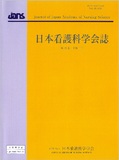Japanese
English
- 販売していません
- Abstract 文献概要
- 参考文献 Reference
要旨
【目的】体表下の硬さが看護大学生の効果的な胸骨圧迫にどう影響するのかを検証し,教育的示唆を得ることである.【方法】看護大学生46名に対し,体表下の硬さの違う床・ベッド上・ベッド上背板使用による胸骨圧迫を行い,圧迫深度,圧迫回数,圧縮の適切な解除率の違いを比較検討した.【結果】圧迫深度において,床とベッド上背板使用による体表下の硬さの違いに有意な差がみられた.また,圧迫深度,解除率には性別差による違いがあった.男子学生は,圧迫深度が深く解除率が低い,女子学生は圧迫深度が浅く解除率が高い結果となった.【結論】性別による圧迫効果の違いを考慮した胸骨圧迫の演習・講習の重要性,身体特徴や実施時の体勢の是正に対する取り組みが求められる.
Chest compressions were performed on 46 nursing students while these students lay on the floor, a bed, and a backboard put on a bed, which all produce a different hardness beneath the body surface, and differences in compression depth, number of compressions, and appropriate decompression rate for compressions were compared in order to develop educational suggestions for examining the impact of nursing students on chest compressions. The results showed a significant difference in compression depth due to variation in hardness beneath the body surface depending on whether the compressions were performed on the floor or a backboard on a bed. Furthermore, differences between the sexes were seen in compression depth and decompression rate. Male students showed a deep compression depth and low decompression rate, whereas female students showed a shallow compression depth and high decompression rate. These findings suggest the importance of chest compression exercises and training that take into account sex-related differences in compression depth, as well as the need for an approach to correct physical characteristics and posture during compressions.
Copyright © 2020, Japan Academy of Nursing Science. All rights reserved.


